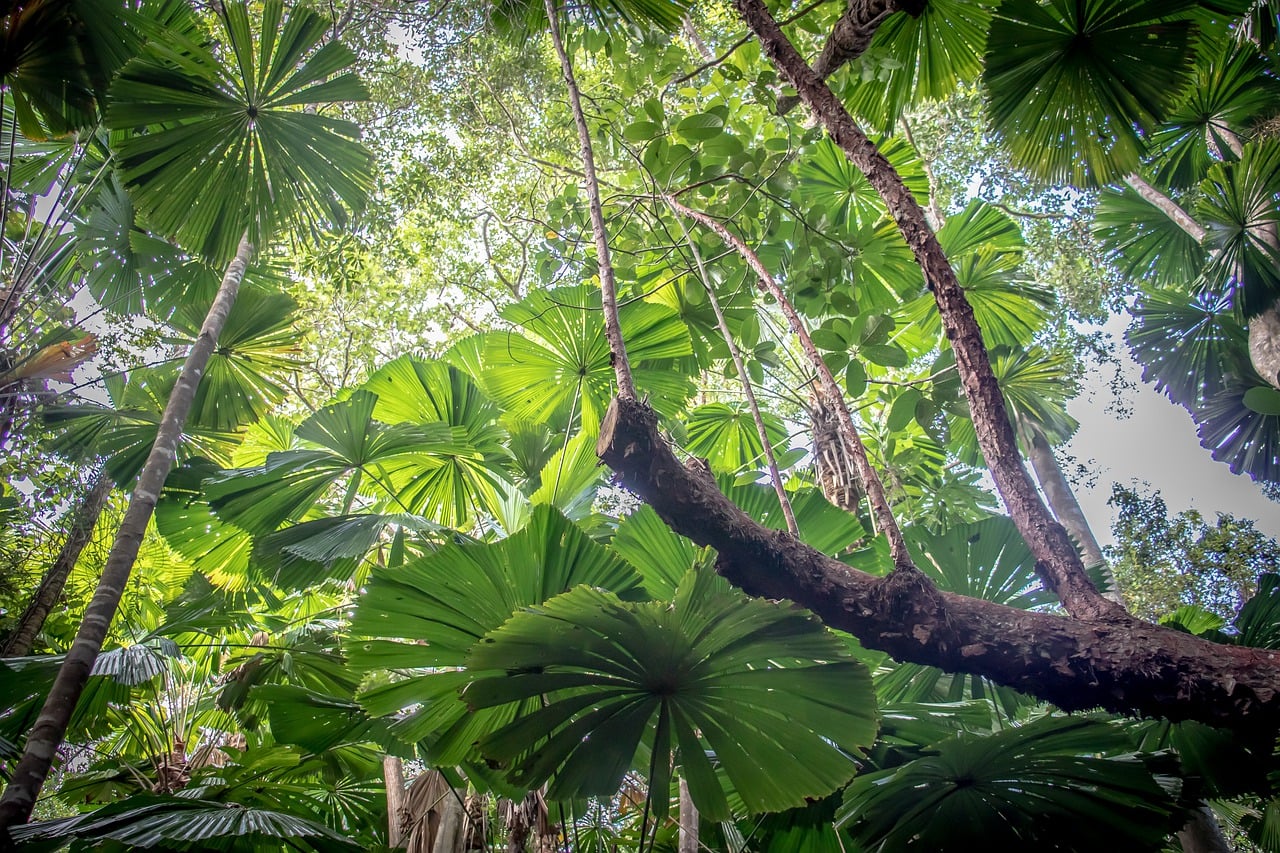$1.66 million has been provided to TERN as part of the Queensland Government’s $25 million Research Infrastructure Co-investment Fund. The investment will create jobs, improve the discoverability, usability and management of ecosystem data, and allow for upgrades to TERN’s critical land ecosystem monitoring equipment—essential for monitoring environmental changes, including responses to extreme events.
The funding from the Queensland Government’s Research Infrastructure Co-investment Fund (RICF) will help TERN collect and deliver essential data on Queensland’s natural and managed ecosystems and in so doing, facilitate innovative research and enable management for sustainable social and economic benefit.
The TERN Director, Dr Beryl Morris, welcomes the announcement of RICF funding, which extends NCRIS-enabled ecosystem research infrastructure in Queensland, the headquarters of Australia’s national land ecosystem observatory.
“The RICF investment into TERN will in the first instance enable the creation of four jobs, bringing the Queensland number to 25.
Investments in new trusted repositories will allow TERN’s data storehouse to be internationally certified with CoreTrustSeal, a certification organisation for data repositories. This recognition will provide independent assurance to users that the data created and used by scientists and Queensland Government is curated, managed and archived to the highest international standards and that it preserves the initial investment in collecting the environmental data.
This funding will also allow soil moisture to be monitored for the first time by TERN in the Brigalow, and carbon and water fluxes to be recorded in the Burdekin and at Samford on Brisbane’s outskirts. Additionally, biodiversity sensors will be upgraded in the Wet Tropics near Cairns. The upgrades to critical environmental monitoring equipment are very timely and allow TERN to continue to deliver essential data on environmental change in Queensland and in particular, responses to and recovery from extreme events.
Dr Beryl Morris, TERN Director
TERN’s Queensland research infrastructure is made up of over 100 environmental monitoring sites, with staff based at St Lucia (University of Queensland and CSIRO), Cairns (James Cook University), Samford (Queensland University of Technology) and Dutton Park (CSIRO).
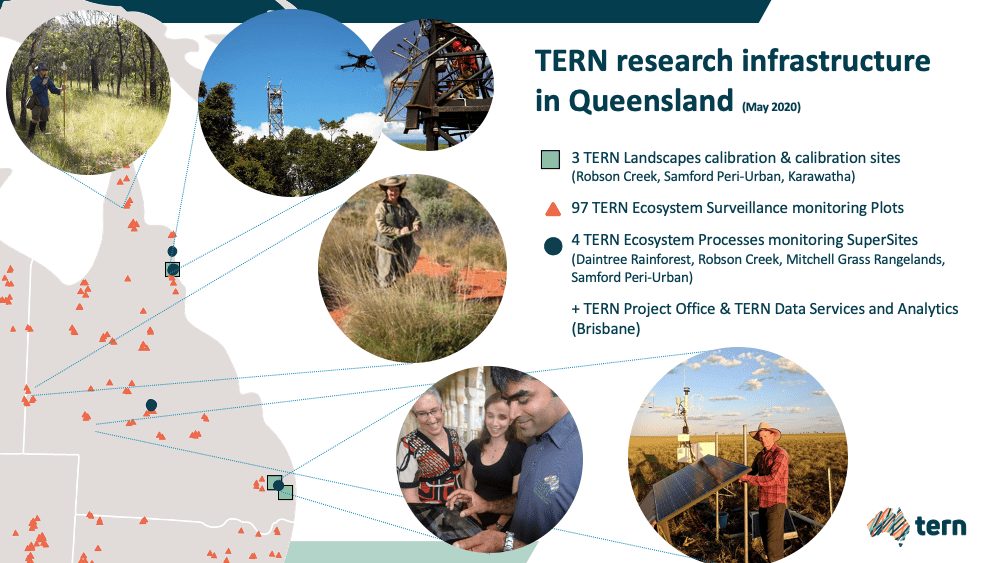
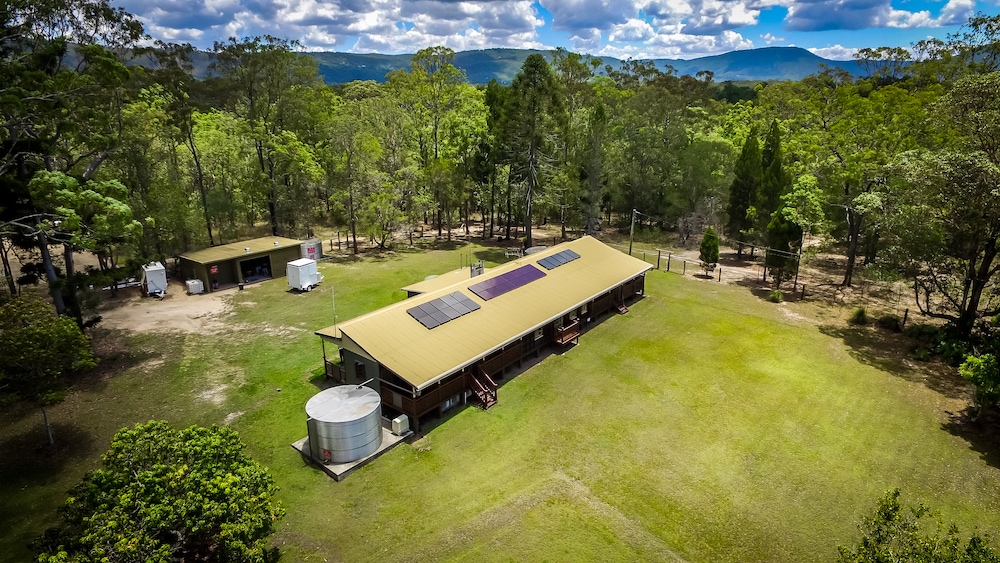
Queensland Government co-investment in TERN will allow the continuation of carbon and water flux measurements at the Queensland University (QUT) of Technology Samford Ecological Research Facility (SERF) on Brisbane’s outskirts (credit: QUT SERF)
Together, the sensors, sites and technical staff provide essential research infrastructure that facilitates research and management of some of the State’s key environmental assets, including biodiversity, soil and vegetation condition, tropical ecosystem research and harnessing the latest science and technology for improved agricultural outcomes.
Moreover, TERN’s collaborative networks connect researchers, end users and investors to ensure the best research outcomes for Queensland.
“Research using TERN is enabling sustainable and enhanced productivity of Queensland’s food, fibre, fuel and natural resource-based industries and is offering greater efficiency and effectiveness in environmental assessment and management.
For example, University of Queensland researchers are using TERN’s data to estimate grain cropping area and produce regular seasonal outlooks for sorghum and wheat, which helps industry make strategic decisions and avoid market volatility within Queensland, Australia and globally.
TERN infrastructure and data products are being used by some of the State’s most successful ecosystem scientists, spread across many universities and institutions. Millions of dollars’ worth of ARC grants rely on components of the collaborative research infrastructure delivered through TERN and its sites are being used to train Queensland’s future scientists.
The data TERN provides on daily soil moisture levels, for example, help land managers better monitor drought, help calculate the risk of bushfires and floods and make highly informed management choices to improve agricultural productivity.”
Dr Beryl Morris, TERN Director
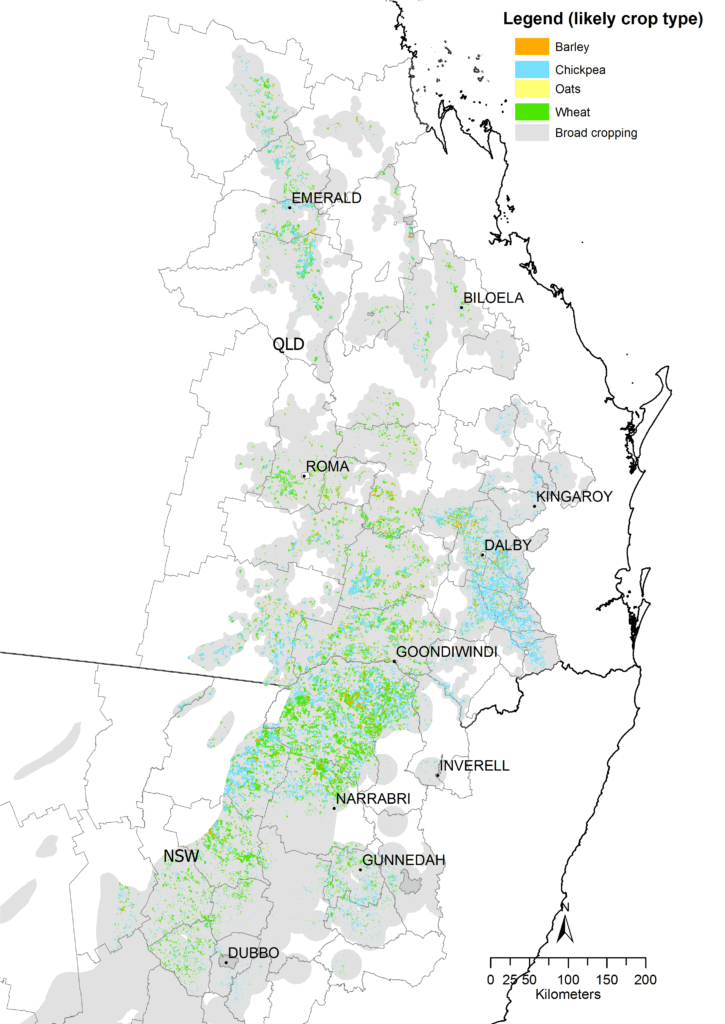
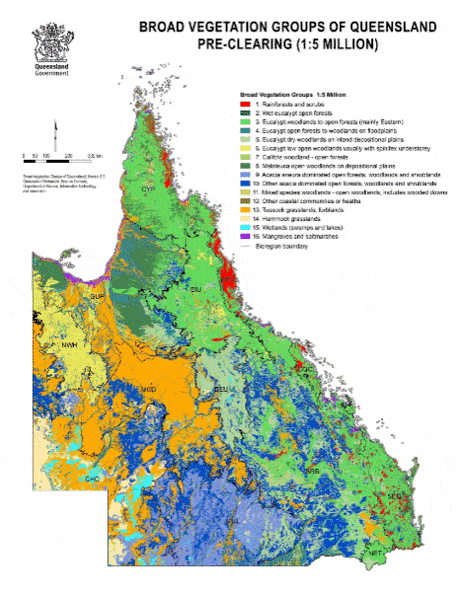
University of Queensland researchers are using TERN delivered remote sensing data to estimate grain cropping area and produce regular seasonal outlooks for sorghum and wheat (left); and access to Queensland Government CORVEG plot data via TERN (right) gives the State’s data widespread exposure and assists it in meeting its open data goals.
The Queensland Government established the RICF grant to complement the Australian Government’s National Collaborative Research Infrastructure Strategy (NCRIS).
The key purpose of the RICF initiative is to provide essential co-investment by the Queensland Government’s Department of Environment and Science in NCRIS facilities in Queensland.
The Queensland Government funding will allow upgrades to critical environmental monitoring equipment, including biodiversity sensors in the Wet Tropics near Cairns
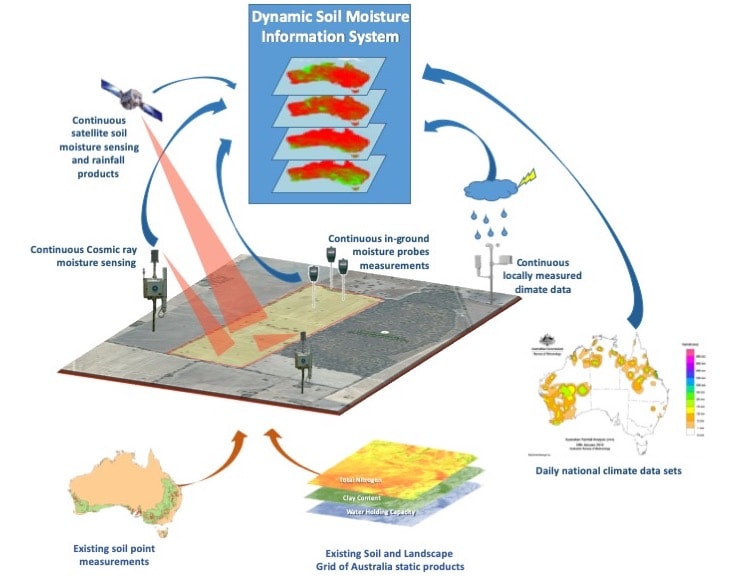
Queensland Government funding will also allow the installation of new on-ground soil moisture sensors in Queensland’s Brigalow Belt, which will form part of TERN’s new soil moisture monitoring system (SMIPS)


